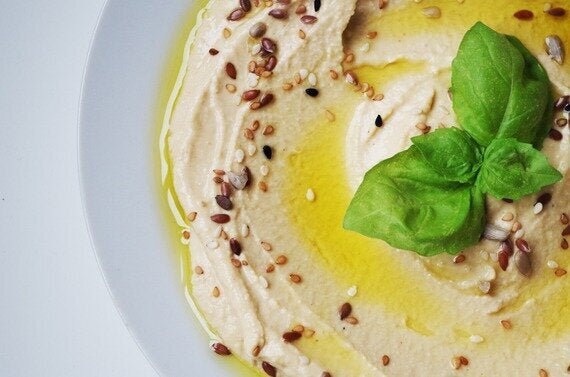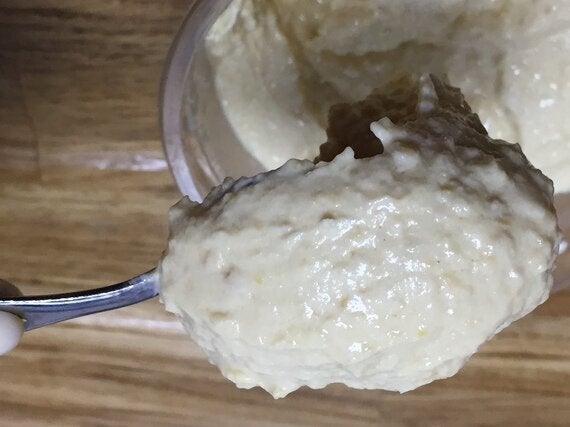Step away from the chickpeas... put down the carrot stick...

(Image Credit: Pixabay)
Hummus has been in the news this week with claims that it has more salt than four bags of crisps. I read the whole article and felt that it wasn't a fair like for like comparison, so I decided to share my own research with you on plain hummus vs ready salted crisps*. I will also cover the reasons why crisps tick all the boxes when it comes to snacking and what else you can try instead!
*For the record, it was the flavoured hummus that scored higher & taramasalata dip was mentioned to be the worst - a funny kind of hummus, to my mind!
Let's clear this up - taramasalata is made from fish roe and generally contains breadcrumbs of wheat flour to thicken it. Hummus is made from chickpeas that are naturally gluten free although always best to read the label to check it does not contain allergens. Glad we have that covered! Now, when comparing salt levels in taramasalata with those in hummus, one supermarket indicated there was 7% more salt in taramasalata than in hummus. That sounds a lot, doesn't it? Actually, that figure is just 0.13g more per 100g than hummus! Taramasalata: Plain Hummus = 1.10g :0.97g. Figures can look far worse as a percentage, always look closely!
Hummus V.S. Crisps
When purchasing hummus, I generally buy organic plain hummus to keep as a snack in the fridge - more often than not I do make my own & freeze it- it freezes surprisingly well. Flavoured hummus for me has warning signals such as, 'what has gone into it to create the flavour?', 'Is it natural or are there natural flavourings?', 'What's the yeast extract content?' etc.. and most importantly, 'How much salt has gone into it in order to add to that flavour?' Upon realising that the article was focussed on flavoured hummus, my surprise at the salt level content was short lived.
By way of fair comparison, I will look at plain hummus and plain crisps, as follows:

(Image Credit: Emily Curson Baker)
So yes, the results demonstrate that plain hummus from a supermarket has more salt & fat. The fat in hummus comes from tahini & olive oil - monounsaturated and polyunsaturated fat. These are good fats that the body breaks down and uses as fuel, not to mention, help to lower blood cholesterol levels. Hummus has less carbohydrates and higher protein than crisps and therefore, will fill you up quicker resulting in a steady release of energy in the body.
Hooked on Crisps?
Crisps have long been pulled up on the oil used to make them and a previous article in 2009 had some very revealing details about why eating crisps tick our boxes for a crunchy snack: "Eating one pack a day is like drinking FIVE LITRES of cooking oil a year: The frightening truth about crisps!"
Michael Moss, the author of newly published book: Salt, Sugar, Fat: How The Food Giants Hooked Us tells us that, "When you pop a crisp in your mouth, he explains, the taste of salt hits you almost immediately. It's an effect that the salt industry calls 'the flavour burst'. Modern crisps are also loaded with fat to provide something that the industry calls 'mouthfeel'. Although generally overlooked, there is sugar found naturally in the starch of a potato and Moss says, "This completes the trio of flavours that our instinctive brains naturally crave" That is - salt, fat & sugar.

"Research has found that the more noise a crisp makes when you bite into it, the more you will like it," Moss says. They have even discovered things such as 'the perfect break point' (apparently, we love crisps that snap with four pounds of pressure per square inch).
All this helps to explain why so many of us 'love' crisps. However, this highly seductive, high-intensity burst of fat, sugar and salt comes at a potential price to our health. Crisps are now the single largest contributor to the obesity epidemic in the U.S., according to research by cardiologist and food researcher Dr Dariush Mozaffarian (New England Journal of Medicine).
He says: All foods are not equal, and just eating in moderation is not enough." In his research of all foods, potatoes stand out as weight-pilers, but especially crisps. It is not just that crisps are easily available and highly fattening, he said - They also make you physically crave more of them.
On that note...
I am very much still in the hummus camp, especially making it homemade as you can leave the salt out or have just a fraction of what is found in shop-bought. Eat with fresh crudites like carrots, celery, cucumber. Someone said to me recently that "making crudities takes time and crisps are so easy" - my suggestion would be, don't cut them up and instead, eat them whole! The perfect, nutritional, quick hit snack! The more crunchy the vegetable, the better - i.e. carrots, celery. Just spoon out the hummus and dip the whole vegetable into it. Plus, chewing the whole food for longer (count 19 chews) will send a signal to your brain that you are eating more than you are, aiding digestion.
Bottom line from me - make your own dips so you know exactly what's in it - flavouring it yourself with natural ingredients and eating with fresh and seasonal crudites!
Recipes
Swap broad beans for chickpeas in this recipe. Then, swap the beans out for different ingredients throughout the year. Even courgette/ marrow/ herbs make great substitutes for the beans.
Super quick pesto: http://www.foodatone.com/portfolio/super-quick-pesto/
Enjoy this dual dip, use it for a creamy calcium rich dip or drizzle over your favourite veg: http://www.foodatone.com/portfolio/pumpkin-chips-tahini-mayo/